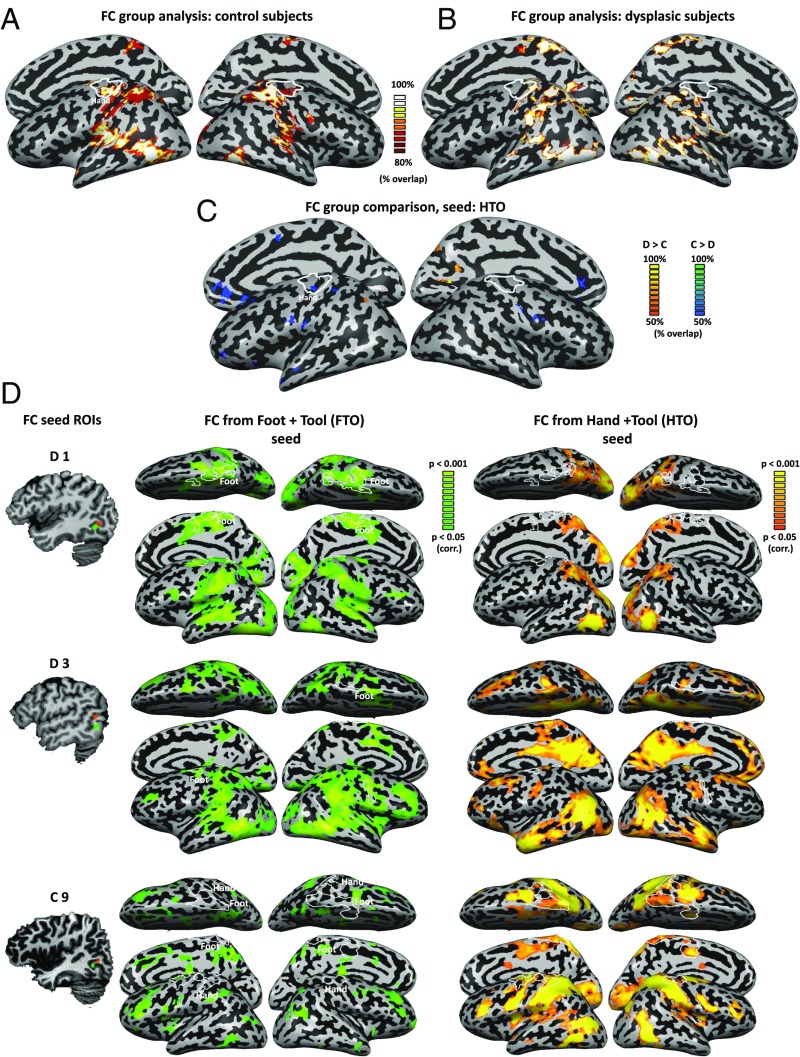Fig. 2.
Connectivity from the occipito-temporal cortex reflects intact visual mechanisms alongside their plasticity. (A) Functional connectivity from the HTO in the control subjects (probabilistic mapping of the functional connectivity of individual subjects, reflecting the percentage of subjects showing this pattern) replicates the network of visual cortical regions engaged in visuomotor tool use processing, extending to the sensorimotor cortex of the hand region (independent localizer marked in white). (B) A highly similar network is connected to the HTO of the dysplasics, across the ventral and dorsal visual streams. One difference between the groups can be seen in the absence of functional connectivity to the primary sensorimotor cortex in the dysplasics. (C) A direct comparison of functional connectivity from the HTO between the dysplasics and control subjects was computed by Bayesian standardized difference test comparison of each dysplasic subject to the control group. The figure denotes a probabilistic mapping of differences, such that only two dysplasic subjects would have to show a difference from the control subjects for a voxel to be marked. Even at this permissive overlap threshold, relatively sparse small foci of differential functional connectivity can be found. These show heightened functional connectivity in the dysplasics in the visual cortex (including the superior parietal lobe), and decreased functional connectivity in the sensorimotor cortices, including the hand sensorimotor cortex (independent localizer: marked in white). (D) Functional connectivity was computed in three subjects, two dysplasics (D1 and D3), and one control (C9), which showed both an HTO and a foot–tool overlap (FTO). The dysplasics show functional connectivity from the FTO but little from HTO to their sensorimotor cortex [including their foot-selective regions, marked in white; these include atypical lateral foot responses (63); for full motor response maps, see Figs. S3 and S4]. In contrast, the control subject shows the reverse trend, of functional connectivity to the sensorimotor cortex only from her HTO. Therefore, the unique experience of the dysplasics in foot–tool use can manifest in functional connectivity linking the FTO to the motor cortex.

